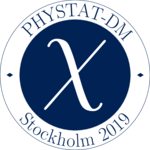Speaker
Description
The look-elsewhere effect is a phenomenon which often arises when looking for signals whose location is not known in advance. In this setting, signal searches can be conducted by performing several tests of hypothesis at different positions over the search area considered. However, if the result of each individual test is not adequately adjusted for the fact that many tests are conducted simultaneously, the overall probability of false discoveries rapidly increases with the number of tests. Alternatively, one can consider the unknown position of the signal as a nuisance parameter and construct confidence intervals and statistical tests of hypothesis by means of Monte Carlo simulations or methods relying on random fields and extreme value theory. The goal of this talk is to provide an overview of the most common methods used to correct for the look-elsewhere effect and highlight their advantages and limitations with respect to the goal of the experiment and the conditions under which the statistical analysis is performed.
